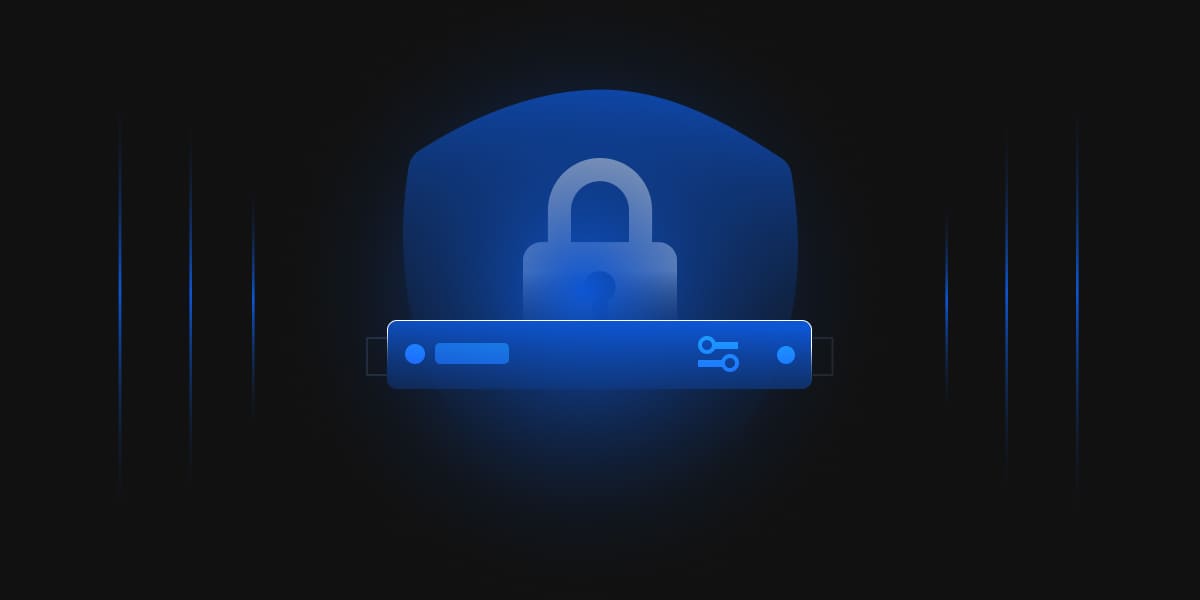In today’s interconnected world, where cyberattacks are constantly increasing, securing remote access to our digital infrastructure is more important than ever. From hackers targeting sensitive information to malicious actors infiltrating enterprise systems, securing your remote access to servers is no longer just a best practice—it is a critical necessity. But how do we protect ourselves from these ever-present risks?
SSH is the ultimate strong solution with advanced encryption and associated authentication methods. SSH is not just another cryptographic protocol; it is the invisible force that shields billions of online communications daily, ensuring that remote access to servers remains secure and private. Whether you are a developer logging into a cloud server, a system administrator managing an enterprise network, or simply a user transferring sensitive files, SSH provides the security that forms the backbone of modern IT infrastructure.
History of SSH
Not so long ago, there were older protocols like Telnet and rlogin that people used to connect to remote systems. It seemed convenient at the time — but there was a catch. Everything, from your credentials to the commands you typed, was sent out in plain text. This opened the door for hackers to eavesdrop on communications, intercept sensitive information, and launch attacks like man-in-the-middle attacks, exposing sensitive data to malicious actors.
Then, in 1995, a Finnish researcher named Tatu Ylönen found himself facing a network attack at his university, and he thought, “There has to be a better way.” And that’s how SSH was born. Within just three months, Ylönen developed the protocol and released it as open-source software. The impact was immediate—SSH quickly replaced insecure protocols like Telnet, rlogin, and rsh, which were rapidly gaining popularity worldwide. By the end of the year, SSH had attracted 20,000 users across 50 countries.
However, as it became widely adopted, a few weaknesses in the original SSH-1 protocol started to surface. To address these, SSH-2 was introduced. SSH-2 brought significant improvements, including stronger encryption algorithms and more secure methods for key exchange, making it far more resistant to attacks. It also resolved vulnerabilities that could potentially allow attackers to intercept data or hijack connections.
Soon, it became the gold standard for secure remote communication. What started as a response to a specific security breach grew into a global movement, fundamentally changing how sensitive data is securely transmitted over the Internet.
What is SSH?
Secure Shell is a cryptographic network protocol designed to enable secure remote access to computers and servers over unsecured networks like the Internet. It is primarily used for remote access to computers or servers, allowing users to log in, run commands, transfer files, and manage systems securely.
SSH is not just limited to logging in. It also supports secure file transfer using protocols like Secure File Transfer Protocol (SFTP) and Secure Copy Protocol (SCP), tunneling other network protocols through secure channels, and forwarding ports to access otherwise restricted services.
Whether you are logging into a cloud server, transferring files, or managing a fleet of machines, SSH ensures that everything remains private and secure. Its working is based on the client-server model, where the client establishes the connection, and the server processes incoming requests. All the data exchanged between the client and the server is encrypted. By default, SSH uses port 22 for its connections.
With an SSH connection, a developer working remotely on a web application hosted on a distant server may securely log into the server, update files, run tests, and deploy code while protecting sensitive information from possible cyber threats. This combination of security and functionality has made SSH an essential protocol for secure remote communication and management in IT.
Think of SSH as a secure pipeline with three parts:
- The transport layer builds the secure pipeline, ensuring that all the data sent over the Internet remains encrypted and safe.
- The user authentication protocol ensures that only the right person can use it.
- The connection protocol lets you send multiple tasks (commands, file transfers, etc.) through that pipeline without interference.
This layered approach makes SSH both powerful and flexible, ensuring that the process is seamless and secure.
SSH Keys
Secure Shell keys are based on public key cryptography, which uses two keys together, a public key and a private key, to make an upwardly strong connection. Private keys remain securely stored on the user’s system or more securely in the Hardware Security Module (HSM) and are used by the user to prove their identity while initiating the connection. The public key, as the name implies, is available publicly on the server. It does not need to be kept secret and is shared openly across the Internet.
Instead of relying on something as vulnerable as a password, SSH uses this cryptographic key pair to grant access. When the client attempts to log in, the server verifies whether the client’s private key matches the public key stored on the server. If they match, access is granted; otherwise, it is denied. This implies that the login credentials cannot be stolen through phishing attacks or cracked with brute force.
Beyond security, SSH also simplifies access through its single sign-on (SSO) capability. Once you have authenticated with your SSH key, you do not have to re-enter your password every time you switch between servers or systems. Thereby allowing the user to move between their accounts without having to type a password every time.
There are different types of key pairs depending upon who or what owns them: a user key, where both the public and private keys belong to the user; a host key, where the keys are stored on a remote system; and a session key, used for encrypting large amounts of data during communication. These keys work together to ensure that data remains secure while being transmitted.
How does SSH work?
SSH (Secure Shell) works under the TCP/IP protocol suite in a client-server architecture. It creates a secure, encoded, confidential connection between two devices, namely, a client and a server, usually over a non-secure network, such as the Internet. In this client-server model, the SSH client initiates the connection, while the SSH server responds and manages the incoming requests.
There are five simplified steps to understand the working of SSH, and those are the following:

-
Connection Initiation
The client sends a request to the server’s IP address over the default SSH port (TCP port 22), initiating a TCP connection. The server responds by sharing its public host key to verify its identity with the client and by providing a list of supported encryption and hashing algorithms.
-
Server Verification
The client then checks the server’s public key by comparing it with the key in its known_hosts file. If the server’s key matches the one in the local file, the connection is trusted. If it does not match, the client is asked for confirmation before proceeding. This way, no unauthorized server can intercept the connection.
-
Key Exchange
When the SSH connection starts, the client and server exchange keys to establish a secure communication channel. This is achieved using cryptographic algorithms like Diffie-Hellman or Elliptic-Curve Diffie-Hellman (ECDH).
- Diffie-Hellman key exchange is a mathematical process that allows the server and client to generate a shared secret key over an insecure connection without transmitting the key itself.
- ECDH, or Elliptic Curve Diffie-Hellman, is a more efficient and secure way for two parties to create a shared secret key. This process is faster and uses shorter key lengths compared to traditional Diffie-Hellman key exchange. This key is then used to encrypt and decrypt the future communication.
-
Client Authentication
Once the secure channel has been created, the server needs to verify that the client is who they claim to be. This is done using one of the two common methods:
- Password Authentication: The client has to provide a password to authenticate itself.
- Public Key Authentication: The client uses a private key to prove their identity, which the server can verify using a public key. This method is more secure than passwords.
-
Secure Session & Data Integrity
After the client is authenticated, an encrypted communication channel is established. Every piece of data transmitted between the client and the server is encoded to prevent unauthorized access. To further ensure data integrity, Message Authentication Codes (MACs) are used, enabling both parties to detect any tampering with the communication.
Once the exchange is completed, the session is securely terminated, and the session key is discarded.
Key capabilities of SSH
SSH is more than just a secure way to access remote systems – it’s a powerful protocol that provides a wide range of functionalities to improve security, flexibility, and control. Here are some of the key capabilities of SSH that make it a go-to tool for IT professionals.
-
Encryption
When encryption algorithms are not properly implemented, many vulnerabilities arise, allowing hackers to obtain sensitive information. SSH addresses this concern by using strong cryptographic algorithms such as AES (Advanced Encryption Standard), RSA (Rivest–Shamir–Adleman), and ECC (Elliptic Curve Cryptography). These encryption algorithms ensure that the entire session is encrypted by converting readable information into an unreadable format. Only those entities that have a decryption key can access the original information. This encryption ensures the confidentiality of user credentials, personal information, and other sensitive data transmitted during an SSH session.
-
Authentication
Before letting someone access your resources or join in on a conversation, you need to make sure they are who they claim to be. This means verifying the identity of both the client and the server to prevent unauthorized access. SSH also offers a range of authentication methods, including password-based authentication and public-key based authentication. In the password-based method, the client enters a password to prove his identity, whereas in public-key authentication, a pair of cryptographic keys is used. These keys are used to validate the identity of the client as well as of the server, making unauthorized access extremely difficult and adding an additional layer of security.
-
Data Integrity
Data integrity ensures that the information transmitted during an SSH session is not altered or tampered with by unauthorized parties. SSH uses message authentication codes (MACs) to verify that the data has not been altered. When data is sent, a cryptographic hash is calculated and sent along with the data. The receiving system recalculates the hash and then compares it with the received hash to ensure the data has not been changed during transmission. Only when the hashes match the data is accepted. Otherwise, it is rejected.
-
Tunneling
SSH tunneling, also known as port forwarding, helps us to securely route network traffic over an encrypted SSH connection, making it possible to access otherwise restricted services such as databases, internal web applications, or intranet resources. Imagine you are working from home and need to access a database on your office network that is normally blocked from outside connections. Using SSH tunneling, you can first connect to a server in the office network that is open to external traffic. Then, through this connection, you create a secure “shortcut” (tunnel) that lets you access the database as if you were sitting in the office. The database thinks your request is coming from within the network, even though you are working remotely.

With SSH tunneling, users can connect to remote services or access local resources from anywhere, all while keeping data safe and protected from prying eyes. It is like having a secure tunnel that lets you access your resources from anywhere without worrying about anyone trying to snoop in or get their hands on your sensitive information.
-
File Transfer
To enable secure transfer of files between systems, ensuring confidentiality and integrity of the transferred data is essential. SSH supports secure protocols such as SSH File Transfer Protocol (SFTP) and Secure Copy Protocol (SCP) for secure file transfers. These protocols use the same encryption and authentication mechanisms as SSH to ensure that files can be transferred securely without the danger of interception or tampering.
What is SSH used for?
Some of its primary applications include:
- Securely access a command line on another computer or execute single commands on a remote server.
- Enables secure remote access to SSH-enabled devices and systems for both users and automated workflows.
- Facilitates encrypted and interactive file transfer sessions.
- Supports automated and secure file transfer processes.
- Ensures proper session management and efficient handling of cryptographic keys.
- Allows users to encrypt web browsing through a proxy.
- Provides secure management of network infrastructure and its components.
- Offers strong user and host-based authentication methods.
- Supports port forwarding to securely route traffic between networks.
SSH Implementation
SSH (Secure Shell) has been a useful tool for secure communication and remote management. Most operating systems like Linux, Unix, and macOS come with built-in SSH clients, making it easy for users to securely connect and manage files without needing any extra software or tools.
However, for Windows users, things used to be a little different. Until recently, Windows lacked native SSH support, so people had to rely on third-party tools like PuTTY to connect securely. PuTTY quickly became the go-to for SSH access on Windows because it offered solid functionality, but it was not perfect. It required some extra steps—like downloading, installing, and configuring it—just to get it up and running.
However, things changed with Windows 10 version 1809, which was released in late 2018. Microsoft finally added native SSH support by directly integrating the OpenSSH client and server into the OS. This allowed users to run SSH commands directly from PowerShell or the Windows Terminal without needing any additional software. Commands like ssh user@hostname could now be executed natively, streamlining workflows, and enhancing system security. This really made things simpler and more secure for users.
There is no denying that tools such as PuTTY are still relevant given their specific use cases, but Windows users have most of their SSH needs addressed by the built-in OpenSSH client. This integration is a substantial advancement towards aligning Windows with Linux and macOS, offering a comprehensive and easy solution for secure communication and file transfer across multiple operating systems.
Potential Security Risks
Like any powerful tool, SSH can be exploited if it falls into the wrong hands. Some of the most common security risks that arise from using SSH or SSH keys are:
-
Key sprawl
With time, as organizations grow, so does the number of SSH keys. New keys are created for different users, systems, and services, and after some time, the huge volume of keys becomes hard to track. This is known as key sprawl. Most of these keys are forgotten or left unmonitored, and therefore, attackers can easily exploit these old, unused keys to gain unauthorized access. This can put sensitive data at risk.
-
Lack of Expiration Date
Another issue is that SSH keys do not have an expiration date like the SSL/TLS certificates. So, once a key is created, it can stay valid forever unless someone remembers to rotate or delete it. System administrators, unsure of which keys are still needed, often hesitate to delete them, fearing it might block access to something important. As a result, these older keys remain in circulation, making it easier for attackers to compromise them.
-
SSH Based Attacks
SSH-based attacks, including brute-force, malware, and session hijacking, are significant threats to organizations. Attackers target SSH keys to gain unauthorized access, allowing them to move across different systems, escalate privileges, and implant backdoors for persistent access. Brute-force and malware attacks often target weak or compromised keys, while session hijacking involves attackers exploiting an active SSH session. This can lead to data theft, system disruption, and severe damage to critical systems.
-
Poor SSH Key Management
The most significant threat to the security of SSH comes from poor key management. Without proper centralized creation, rotation, and removal of SSH keys, organizations can lose track of who has access to critical systems. Particularly in automated environments, where keys may be embedded within scripts or applications, this can create significant risks. Therefore, regular auditing, key rotation, and revocation of unnecessary keys are essential to maintaining secure SSH access.
-
Abuse of SSH Tunneling
The ability of SSH to create encrypted tunnels allows attackers to bypass traditional network security measures. For example, attackers can use SSH tunnels to mask their activities or send malicious data through an encrypted connection, which makes it difficult for firewalls or intrusion detection systems to detect them.
-
Persistent Access via Stolen SSH Keys
If an attacker successfully steals an SSH private key, they can gain persistent access to a server or system. Since SSH keys are often used for automated and long-term access, an attacker could maintain access to a network for months or even years without being detected, especially if the stolen key is not properly revoked or rotated.
-
Backdoor Access via SSH
Malicious actors can exploit SSH to create backdoors into a network. Once they gain access to a system via stolen credentials or weak keys, they may install malicious tools or scripts that allow them to bypass traditional security measures and regain access later, even if the original point of entry is closed.
Even though SSH is a strong tool for secure communication, it comes with its own risks. Weak passwords, exposed private keys, and outdated versions can make SSH vulnerable to attacks. Therefore, it is important to keep SSH keys secure, regularly update SSH software, and follow best practices to minimize any security risks.
SSH Best Practices
SSH remains a primary target for cyberattacks and can compromise the security of an entire remote system. A report from Cado Security Labs indicates that 68.2% of observed attack samples targeted SSH, highlighting its prominence in threat actor activities.
To prevent this, organizations must adopt best practices for SSH key management. The following best practices not only improve security but also align with the latest NIST guidelines, providing comprehensive protection against potential threats.
-
Identity Management and Authentication
To ensure robust authentication, organizations should enforce key-based authentication and disable password-based logins to mitigate brute-force attacks. Strong cryptographic keys, such as 2048-bit RSA or Ed25519, should be used and regularly rotated to minimize the risk of long-term exposure. Private keys must be stored securely, encrypted with strong passphrases, and tied to unique users. Where possible, implement multi-factor authentication (MFA) for an added layer of security for accessing critical systems.
-
Access Control and Authorization
Organizations must strictly control who can access SSH services. Root login should be disabled, and access should be limited to specific users or groups using configuration directives like AllowUsers or AllowGroups. To enhance security further, firewalls or TCP wrappers should be modified to restrict SSH access to trusted IP ranges. Further, implementing the principle of least privilege ensures that users are granted only the access necessary for their roles.
-
SSH Configuration and Security Hardening
Vulnerabilities should be reduced by securing SSH configuration. Best practices include changing the default port from 22 to a custom value and disabling unused or less secure features such as SSH Protocol 1. PermitEmptyPasswords and PermitRootLogin configurations should be set to ‘NO’. Another recommendation is that weak cryptographic algorithms and ciphers should be turned off, and all configurations should be reviewed periodically in order to maintain a minimum level of security.
-
Continuous Monitoring and Logging
Continuous monitoring is critical for the identification of potential threats. SSH servers must be configured to keep records of authentication attempts and command execution at a detailed level (LogLevel VERBOSE). All logs must be collected into centralized monitoring systems for effective analysis and anomaly detection upon regular review. These logs can help identify patterns of suspicious activity or unauthorized access.
-
Incident Detection and Response
Organizations must initiate measures towards SSH-related incidents. For instance, Fail2ban can be installed to block repeated failed login attempts from users. Configurations such as “ClientAliveInterval” and “ClientAliveCountMax” should be used for idle session timeout enforcement. Any organization’s incident response plan must clearly address scenarios like a key compromise to ensure speedy action from the teams to minimize possible damage.
By following these best practices, you can significantly improve the security of your SSH configurations and protect your remote systems from potential threats.
Conclusion
We live in an increasingly digital world where technology is moving faster than ever. Many people are already working remotely as a result of a drastic change caused by the global pandemic. Users are concerned with keeping their connections as safe as possible when accessing remote systems. SSH allows us to make secure channel communications, file transfers, and remote management. While SSH keys are incredibly powerful, their security largely depends on the practices put in place to manage them.
At Encryption Consulting, our Advisory Services are designed to help organizations identify vulnerabilities in their cryptographic systems, policies, and protocols. Our offerings include tailored encryption assessments to evaluate the security of SSH environments, ensuring sensitive data and access remain protected. We also conduct detailed audits to review SSH configurations, key management, and policies, helping organizations meet compliance standards like FIPS, NIST, PCI-DSS, and GDPR. Additionally, our team will assist you in developing encryption strategies and planning the deployment of enterprise-level SSH solutions to build secure and scalable systems.




